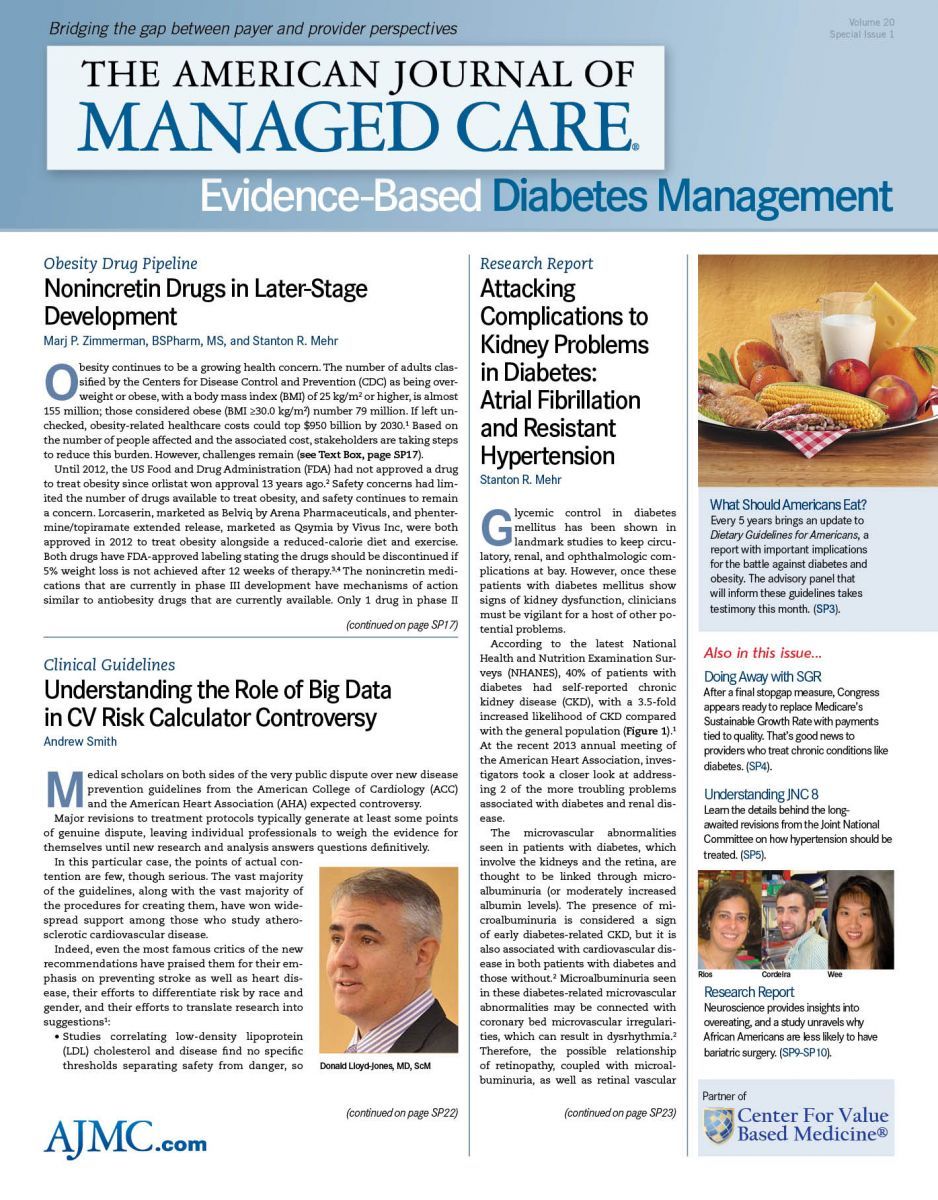- Center on Health Equity & Access
- Clinical
- Health Care Cost
- Health Care Delivery
- Insurance
- Policy
- Technology
- Value-Based Care
In Controlling Diabetes and Obesity, Employers Have Opportunities
Brenda Schmidt serves as president and CEO of Viridian Health Management, which helps employers deliver integrative healthcare services that promote better health among staff while helping companies improve their bottom line. Schmidt works in collaboration with the Centers for Disease Control and Prevention (CDC) and the US Department of Health and Human Services (HHS) on the National Diabetes Prevention Program and the National Healthy Worksite Program.
Schmidt spoke with Evidence-Based Diabetes Management after serving as a panelist at Diabetes Innovation 2013, sponsored by Joslin Diabetes Center in Washington, DC, last fall. Below is an edited version of her interview.
EBDM: What is your company’s approach to working with employers to transition them to the new world of healthcare management?Schmidt: Employers have an important role in maintaining and improving the health of their employees. The approach we take is dual-pronged. First, we work with the employer to create a culture of safety and health. The literature shows that if employers do that, and create an environment in which the employee can be healthier, then individuals actually do take greater responsibility for their health. Second, we work individually with employees to make them healthier.
EBDM: Why is the workplace the right place for this to happen?
Schmidt: We spend an awful lot of time at work. That environment can impact either positively or negatively on our health. When you think on the safety side, we know things like the stress of noise, chemicals, or shift work all contribute to cardiovascular disease. On the health side, we can work on things such as what is served in the cafeteria or create opportunities for exercise. All of those things impact employee health, either at the work site or at home.
EBDM: What concerns do employers have about employees with diabetes or prediabetes?Schmidt: Historically, the conversation has been around the cost of healthcare claims. Today, the conversation is changing; it’s more around workers’ productivity, about presenteeism and absenteeism. (Presenteeism refers to employees who may be at work but not functioning at their optimal level.) If you look at that in the global scheme of trying to be more productive, addressing these issues leads to the employer being more able to compete. Those are the conversations we are having more frequently today with employers, rather than just talking about healthcare costs.
EBDM: Individual employee health coaching sounds expensive for small employers. What can small employers do?
Schmidt: Small employers can do a lot. Many times they don’t start thinking about worksite health until something happens to one of their employees—someone has a heart attack—but they can do an awful lot. Issues of environmental support and control, like creating tobacco-free policies or healthy eating policies, they can have as much impact—and they’re free—as some of the more costly individual interventions.
EBDM: It’s good that you brought up tobacco. A generation ago it was considered intrusive to talk to an employee about his or her smoking, but today, smoke-free workplaces are common. Is it becoming commonplace to talk to employees at work about diabetes and obesity?Schmidt: That’s a really good point. With tobacco, it started off as being taboo. Then we started having those conversations, and there was a bigger public health message. Employers started paying for employees to go to tobacco cessation programs, and they created tobacco-free campuses. It’s more commonplace now for the workplace to be a place where people talk about health.
We’ve also seen the tobacco youth status, which refers to the differential in premiums between people who use tobacco and those who do not. With diabetes and obesity, we’re not there yet, but certainly the employers are providing more opportunities for their employees to be healthy.
EBDM: What are some of the technologies that employers can use to assist their staff to work on diabetes and obesity issues?
Schmidt: There are lot of emerging technologies. We look at it as a combination of high-touch and high-tech. As the market moves toward moreconsumerism, digital apps, online programs, and text messaging are becoming commonplace, and they create opportunities to reach more employees. And they’re more exciting, because everything is becoming more personalized.
EBDM: Is there an age differential with technology?
Schmidt: We thought there would be at first. We thought groups over 50 years old would be less likely to go to digital health apps. We really haven’t found that to be the case. Access to smartphones, digital technology, and the Internet is pretty ubiquitous in the populations that we are trying to reach.
EBDM: What are the opportunities for employers?
Schmidt: Employers have huge opportunities to impact the health of their employees. They can impact not only the health of those with chronic conditions, but they can play a role in prevention as well. There are a lot of levers employers can pull to keep their employees healthy.
EBDM: If they invest in these programs, will employers see the benefit?
Schmidt: Yes, absolutely.

Health Outcomes of Dually Eligible Beneficiaries Under Different Medicare Payment Arrangements
December 1st 2025Within the same physician groups, 2-sided risk in Medicare Advantage (MA) was associated with higher quality and lower utilization for dually eligible beneficiaries compared with fee-for-service MA and traditional Medicare.
Read More
Mental Health Care Use After Leaving Medicare Advantage for Traditional Medicare
December 1st 2025Medicare Advantage beneficiaries with mental health diagnoses see more nurse practitioners and fewer internal medicine and emergency medicine specialists after switching to traditional Medicare.
Read More
